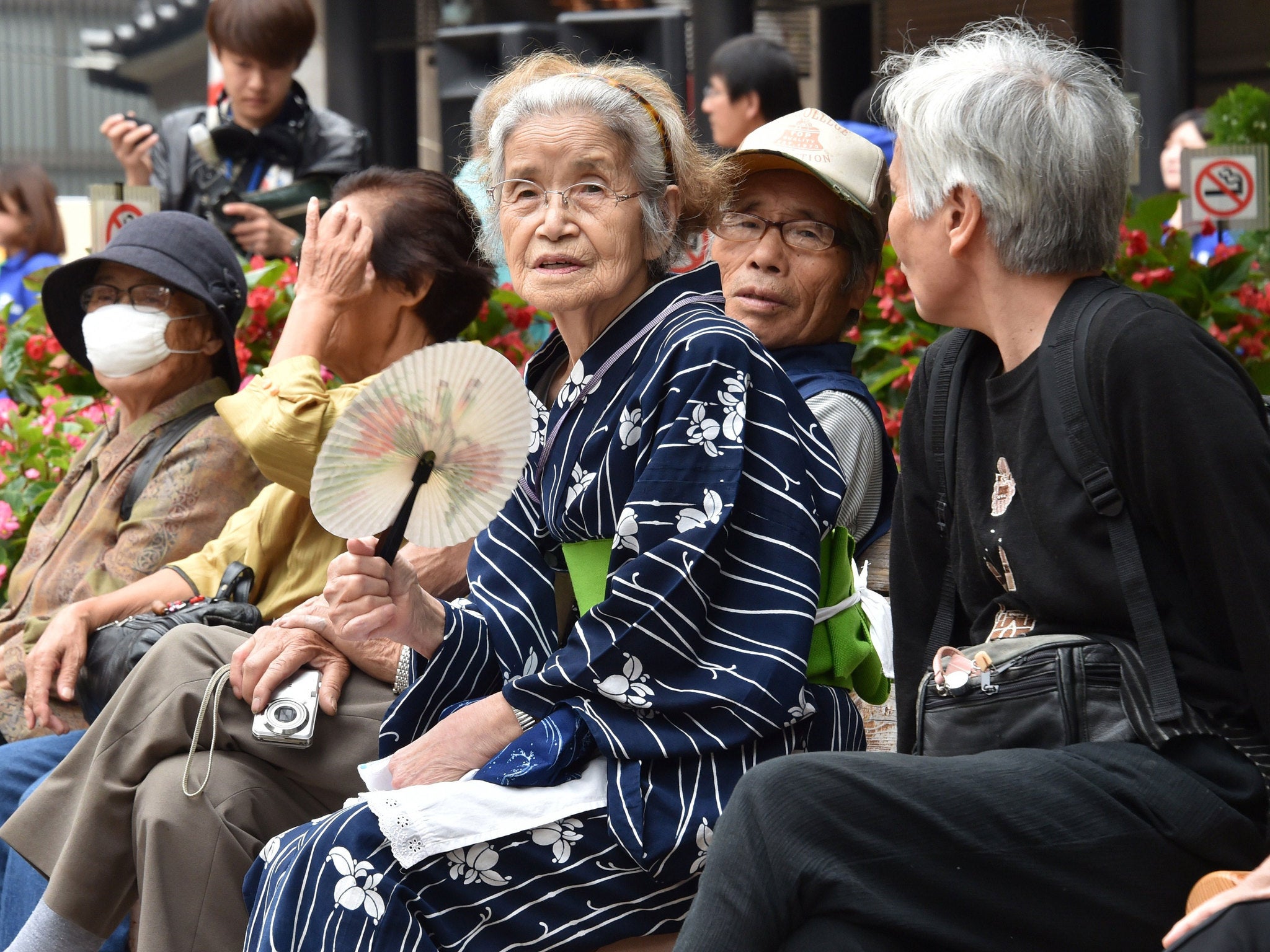Japan’s rapidly ageing population hits concerning milestone
Country’s population has been in consistent decline since the economic boom of the 1980s

Japan’s already alarming demographic crisis has now hit a worrying new milestone.
For the first time in the country’s history, people aged 80 and above now make up 10 per cent of the population, according to data released by the government.
Approximately 36.23 million individuals in Japan were aged 65 or older as of 15 September, according to the data. This represents a record-breaking 29.1 per cent of the total population – marking a 0.1-point increase from the previous year.
The statistics were released by Japan’s internal affairs ministry on the eve of “Respect-for-the-Aged Day”, a public holiday celebrated across Japan on 18 September.
The island nation is already grappling with a declining birth rate and a diminishing workforce, which may have significant implications for funding pensions and healthcare services, especially as demands from an ageing population continue to rise.
Japan’s population has been in consistent decline since the economic boom of the 1980s, primarily due to a fertility rate of 1.3 – significantly lower than the 2.1 required to sustain a stable population without immigration.
Over the past decade, deaths have consistently exceeded births in Japan, presenting an increasingly complex challenge for the country’s leadership.
Japan, the world’s third-largest economy, boasts one of the highest life expectancies globally, which further contributes to the burgeoning elderly population.
In response to the escalating labour shortage and as part of efforts to reignite a sluggish economy, the Japanese government has been actively promoting the reintegration of elderly citizens and stay-at-home mothers into the workforce over the past decade.
Reports say that Japan currently boasts a record number of 9.12 million elderly workers – a figure that has seen growth for 19 consecutive years.
People aged 65 and above now constitute over 13 per cent of the country’s total workforce, according to the internal affairs ministry’s data.
In January, prime minister Fumio Kishida issued a dire warning about the country’s population crisis and said it was “on the brink of not being able to maintain social functions” due to the falling birth rate. He said the issue needed to be solved “now or never”, and that it “simply cannot wait any longer”.
“In thinking of the sustainability and inclusiveness of our nation’s economy and society, we place child-rearing support as our most important policy,” he said.
Neighbouring countries like China, South Korea, Singapore and Taiwan are grappling with similar challenges, as they are faced with the task of motivating young individuals to have more children amid increasing living expenses and mounting social discontent.
Last year, South Korea set a new record for the lowest fertility rate in the world. Data released in November 2022 indicated the average number of children a South Korean woman is expected to have in her lifetime has plummeted to a mere 0.79, marking a significant decline.
In neighbouring China, the population shrank for the first time since the 1960s early this year. According to the China National Bureau of Statistics, the country’s population dropped in 2022 to 1.411 billion, a decrease of approximately 850,000 people compared to the previous year.


Join our commenting forum
Join thought-provoking conversations, follow other Independent readers and see their replies
Comments